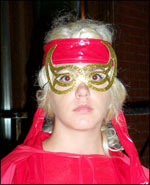A summary of Galbraith’s The Affluent Society
From a summary of John Kenneth Galbraith’s The Affluent Society (Abridge Me: 1 June 2010):
The Concept of the Conventional Wisdom
The paradigms on which society’s perception of reality are based are highly conservative. People invest heavily in these ideas, and so are heavily resistant to changing them. They are only finally overturned by new ideas when new events occur which make the conventional wisdom appear so absurd as to be impalpable. Then the conventional wisdom quietly dies with its most staunch proponents, to be replaced with a new conventional wisdom. …
Economic Security
… Economics professors argue that the threat of unemployment is necessary to maintain incentives to high productivity, and simultaneously that established professors require life tenure in order to do their best work. …
The Paramount Position of Production
… Another irrationality persists (more in America than elsewhere?): the prestigious usefulness of private-sector output, compared to the burdensome annoyance of public expenditure. Somehow public expenditure can never quite be viewed as a productive and enriching element of national output; it is forever something to be avoided, at best a necessary encumbrance. Cars are important, roads are not. An expansion in telephone services improves the general well-being, cuts in postal services are a necessary economy. Vacuum cleaners to ensure clean houses boast our standard of living, street cleaners are an unfortunate expense. Thus we end up with clean houses and filthy streets. …
[W]e have wants at the margin only so far as they are synthesised. We do not manufacture wants for goods we do not produce. …
The Dependence Effect
… Modern consumer demand, at the margin, does not originate from within the individual, but is a consequence of production. It has two origins:
- Emulation: the desire to keep abreast of, or ahead of one’s peer group — demand originating from this motivation is created indirectly by production. Every effort to increase production to satiate want brings with it a general raising of the level of consumption, which itself increases want.
- Advertising: the direct influence of advertising and salesmanship create new wants which the consumer did not previously possess. Any student of business has by now come to view marketing as fundamental a business activity as production. Any want that can be significantly moulded by advertising cannot possibly have been strongly felt in the absence of that advertising — advertising is powerless to persuade a man that he is or is not hungry.
Inflation
… In 1942 a grateful and very anxious citizenry rewarded its soldiers, sailors, and airmen with a substantial increase in pay. In the teeming city of Honolulu, in prompt response to this advance in wage income, the prostitutes raised the prices of their services. This was at a time when, if anything, increased volume was causing a reduction in their average unit costs. However, in this instance the high military authorities, deeply angered by what they deemed improper, immoral, and indecent profiteering, ordered a return to the previous scale. …
The Theory of Social Balance
The final problem of the affluent society is the balance of goods it produces. Private goods: TVs, cars, cigarettes, drugs and alcohol are overproduced; public goods: education, healthcare, police services, park provision, mass transport and refuse disposal are underproduced. The consequences are extremely severe for the wellbeing of society. The balance between private and public consumption will be referred to as ‘the social balance’. The main reason for this imbalance is relatively straightforward. The forces we have identified which increase consumer demand as production rises (advertising and emulation) act almost entirely on the private sector. …
It is arguable that emulation acts on public services to an extent: a new school in one district may encourage neighbouring districts to ‘keep up’, but the effect is relatively miniscule.
Thus, private demand is artificially inflated and public demand is not, and the voter-consumer decides how to split his income between the two at the ballot box: inevitably public expenditure is grossly underrepresented. …
A summary of Galbraith’s The Affluent Society Read More »
 For the past seven years Terrifica has been patrolling New York’s party and bar scene, looking out for women who have had a little too much to drink and are in danger of being taken advantage of by men. She says she has saved several women from both themselves and predators who would prey upon their weaknesses — both from alcohol and a misguided notion that they have to go out drinking to find a companion.
For the past seven years Terrifica has been patrolling New York’s party and bar scene, looking out for women who have had a little too much to drink and are in danger of being taken advantage of by men. She says she has saved several women from both themselves and predators who would prey upon their weaknesses — both from alcohol and a misguided notion that they have to go out drinking to find a companion.